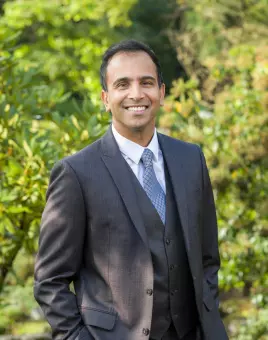Prof. Samir Parikh Speaks Up on Purdue Pharma

Lewis & Clark University
On May 30, 2023, the Second Circuit Court of Appeals affirmed the bankruptcy court order approving a modified version of Purdue Pharma’s plan of reorganization and, in doing so, recognized the validity of nonconsensual third-party releases in limited circumstances. But in his concurring opinion, Circuit Judge Richard Wesley noted the long-standing circuit split on this issue and practically begged the Supreme Court to take up the case. On August 10, the Court obliged.
Mass tort bankruptcies highlight the schism between features that are necessary to effectuate a meaningful and timely resolution and those that are constitutionally compliant. Claimants in the Purdue case voted overwhelmingly to approve the plan of reorganization.1 In the aggregate, the vote was over 95% in favor of plan confirmation. We know from the victim statements submitted in the case that these individuals understood the consequences of the third-party releases, but they also understood that there was little chance of a meaningful recovery without a compromise with the Sackler family.
From 2008 to 2016, Purdue paid approximately $10.4 billion in dividends to Sackler family members or Sackler-controlled entities. There is an argument that these were fraudulent transfers. Couldn’t the court have just clawed back these funds? Unlikely. A significant portion of the transfers occurred outside the applicable statute of limitations, and $4.6 billion of the funds went to pay Purdue’s federal and state taxes. The remaining balance (approximately $1.5–2 billion) is predominantly in restricted spendthrift trusts overseas. How much would have to be spent to retrieve those funds? How many years would it take? The claimants understood all of this and voted accordingly. The third-party releases were an essential part of convincing the Sacklers to contribute over $5.5 billion and fulfilling what I believe is the objective of mass tort bankruptcies: securing meritorious claimants the largest recovery possible on the shortest timeline.
The Second Circuit carved out a nice compromise in Purdue. Indeed, the scope of the releases was extremely limited and the opinion—if allowed to stand—would force courts in that circuit to run the gauntlet of a seven-factor test premised on detailed factual and legal findings.
But the pragmatism driving this resolution may be insufficient to save the practice. Many academics do not believe that bankruptcy courts have the constitutional authority to grant nonconsensual third-party releases, which raise thorny Due Process issues.2 And if the Supreme Court leans into its current textualist tendencies, nonconsensual third-party releases may no longer be available in cases like Purdue. In fact, there is a possibility that the Court could also strike down the grant of power that exists in Section 524(g) for asbestos exposure cases. If that scenario were to unfold, resolving mass tort cases would become infinitely more difficult—a terrible outcome for the victim collectives in these cases. Resolution outside of bankruptcy—either through multi-district litigation or case-by-case adjudication—can be extremely protracted and inequitable.3
What happens if the Supreme Court rules that bankruptcy courts do not have the constitutional authority to grant nonconsensual third-party releases outside of Section 524(g)? Nonconsensual third-party releases would still be available for cases involving asbestos exposure. But the truth is that modern mass tort cases rarely involve asbestos exposure.4 And what if the Supreme Court goes further and holds that bankruptcy courts lack the authority to approve nonconsensual third-party releases under any circumstances? Well, a nondebtor party making a significant financial contribution to a victims’ settlement trust in a mass tort case may be able to secure a consensual third-party release from a significant majority of current claimants.5 Those refusing to agree may be allowed to pursue their claims in other venues. The primary complicating factor in this type of scenario involves a mass tort case where future victims make up a significant portion of the claimant pool. Without the possibility of a nonconsensual third-party release in such a case, bankruptcy may no longer offer the optimal venue for resolution.
To read more about mass tort bankruptcies and the complexities they present see Mass Exploitation, The New Mass Torts Bargain, Due Process Alignment in Mass Restructurings, and Scarlet-Lettered Bankruptcy: A Public Benefit Proposal for Mass Tort Villains.
Copyright© 2023 Creditor Rights Coalition. All rights reserved.
1 Over 95% of the personal injury classes voted to accept the plan, though a significant number of claimants did not vote at all.
2 Professor Levitin has argued that bankruptcy courts do not even have the authority to grant consensual third-party releases when claims are not ripe and estate property is not involved. See Adam J. Levitin, The Constitutional Problem of Nondebtor Releases in Bankruptcy, 91 Fordham L. Rev. 429 (2022).
3 See Samir D. Parikh, The New Mass Torts Bargain, 91 Fordham L. Rev. 447 (2022).
4 See id.
5 Consensual third-party releases may be easier to secure outside of the mass torts context in cases with limited numbers of creditors.
